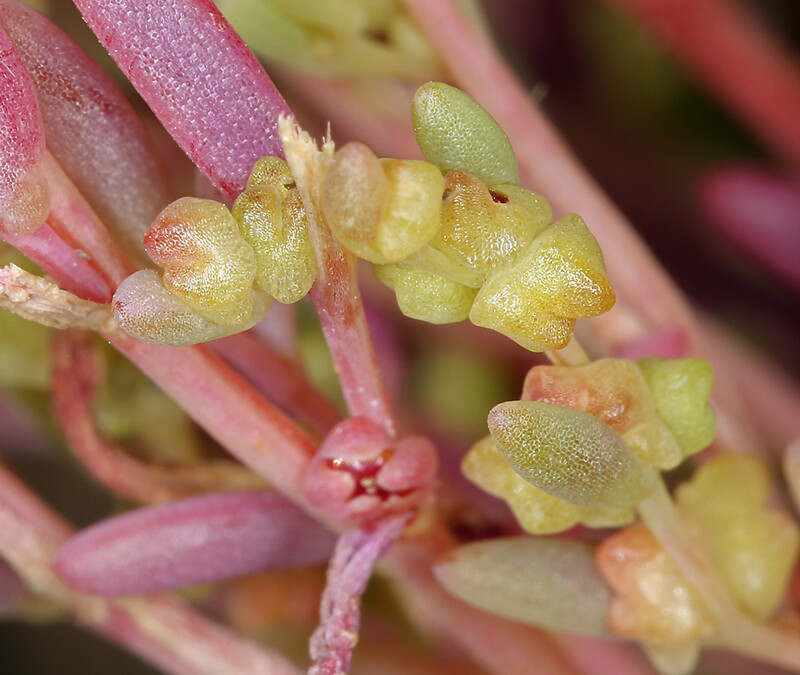Hosted by the University of Washington Herbarium, Burke Museum
Publication: Proc. Amer. Acad. Arts. 9: 90. 1874.
Origin: Native
selected vouchers: WTU
Notes: Found in saline situations east of the Cascades.
FNA4: "This species is easily confused with Suaeda calceoliformis, which occurs throughout its range. There are virtually no differences in floral characters. Bracts of S. occidentalis often appear thin-margined at the base in dried specimens but not in fresh material, whereas bracts of S. calceoliformis have visible membranous margins in both. Differences in bract and branching characteristics are usually distinct in fresh specimens. Larger specimens of S. occidentalis are usually branched throughout, with the spreading branches resulting in a more-or-less spherical shape of the plant. The mostly ascending branches of the more-erect S. calceoliformis tend to be concentrated in the upper half of the main stems, with primary branches sometimes arising from the base, and therefore creating a candelabrum shape of the plant."
References:

